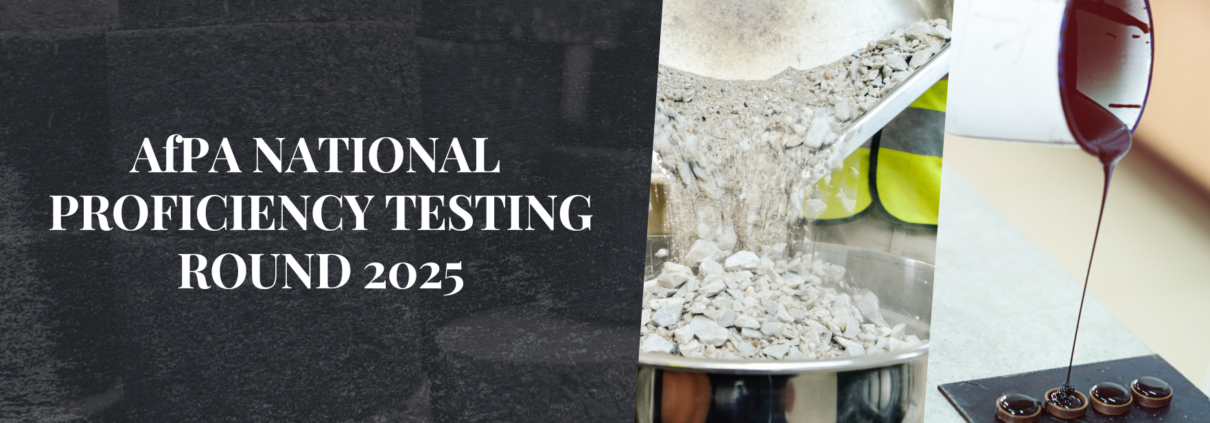Thank you – Registrations are now closed
AfPA and its members have been conducting proficiency testing since 2004. Proficiency testing involves the determination of laboratory performance by means of interlaboratory comparisons. AfPA proficiency testing involves participating laboratories to undertake selected asphalt, bitumen and/or aggregate tests, and their results are compared to those of other participating laboratories. Apart from the benefits to individual laboratories in terms of improving consistency, the results have enabled AfPA to propose improvements to test methods nationally. The 2025 round will again be a national undertaking, providing all AfPA members and stakeholders the opportunity to be part of the industry drive to continually improve consistency and confidence in test results. Testing in this round will cover the following streams :
- Stream 1 – Asphalt tests (asphalt mix sample will be provided)
- Stream 2 – Binder extraction and testing (asphalt mix sample and binder sample will be provided)
- Stream 3 – Coarse aggregate tests (coarse aggregate sample will be provided)
- Stream 4 – Resilient modulus (asphalt mix sample will be provided)
- Stream 5 – Wheel tracking (asphalt mix sample will be provided)
- Stream 6 – Moisture sensitivity: Tensile strength ratio (TSR) (asphalt mix sample will be provided)
- Stream 7 – Polymer Modified Binder test (binder samples will be provided)
- Stream 8 – Fine Aggregate and Filler Samples (fine aggregate and filler sample will be provided)
Key Dates:
- Registrations: Closed.
- Testing period: From receiving of samples (May 2025) – 18 July 2025. Note: NO EXTENSIONS or changes to data will be granted after final submission date has passed. Please note there is a delay with the asphalt samples for stream 1, 2, 4, 5 and 6. Testing period dates will be updated once samples have been sent.
- Final results and report release: October 2025
Test Details
- 1. Asphalt testing
- Bitumen content and grading AS/NZS 2891.3.1, or AS/NZS 2891.3.3
- Max density AS/NZS 2891.7.1
- Marshall compaction AS/NZS 2891.5
- Marshall stability and flow AS/NZS 2891.5
- Gyratory compaction AS/NZS 2891.2.2
- Bulk density (Presaturation) AS/NZS 2891.9.2
- Density of binder using Density Bottle (Partial filling method) AS 2341.7
- Storage Stability ATM-104
- Consistency 6% using the DSR ATM-120
- 2. Binder & Binder Recovery
- Binder extraction ATM-191, ASTM D5404, or ASTM D1856
- Viscosity of RAP binder using DSR ATM-192
- Capillary Viscosity at AS/NZS 2341.2
- Penetration AS/NZS 2341.12
- Dynamic Viscosity using a Rotational Viscometer AS/NZS 2341.4
- Capillary Viscosity after RTFO AS/NZS 2341.10 or ASTM D2872 and AS/NZS 2341.2
- Density of binder using Density Bottle (Partial filling method) AS 2341.7
- Storage Stability ATM-104
- Consistency 6% using the DSR ATM-120
- 3. Aggregate and filler
- Particle density and water absorption AS1141.6.1, or AS1141.6.2
- Particle size distribution AS1141.11.1
- Average least dimension (ALD) nominal 10 mm and greater direct measurement AS1141.20.1
- Average least dimension (ALD) Calculation by nomograph AS1141.20.3
- Flakiness index AS1141.15
- Bulk density (Presaturation) AS/NZS 2891.9.2
- Density of binder using Density Bottle (Partial filling method) AS 2341.7
- Storage Stability ATM-104
- Consistency 6% using the DSR ATM-120
- 4. Resilient modulus
- Resilient Modulus – Indirect tensile method
AS/NZS 2891.13.1 - Maximum Density AS/NZS 2891.13.1:2013
- Bulk Density
AS/NZS2891.9.2 (pre-saturation) - Resilient Modulus AS/NZS 2891.9.2 (pre-saturation)
- Gyratory compaction AS/NZS 2891.2.2
- Bulk density (Presaturation) AS/NZS 2891.9.2
- Density of binder using Density Bottle (Partial filling method) AS 2341.7
- Storage Stability ATM-104
- Consistency 6% using the DSR ATM-120
- 5. Wheel tracking
- Deformation Resistance – WT ATM-231
- Maximum Density AS 2891.7.1
- Bulk Density
AS/NZS2891.9.2 (pre-saturation) - Marshall stability and flow AS/NZS 2891.5
- Gyratory compaction AS/NZS 2891.2.2
- Bulk density (Presaturation) AS/NZS 2891.9.2
- Density of binder using Density Bottle (Partial filling method) AS 2341.7
- Storage Stability ATM-104
- Consistency 6% using the DSR ATM-120
- 6. TSR
- Stripping Potential – TSR ATM-232
- Prepare Gyratory briquettes AS/NZS 2891.2.2
- Maximum density AS/NZS 2891.7.1
- Bulk Density AS/NZS 2891.9.2 (pre-saturation)
- Gyratory compaction AS/NZS 2891.2.2
- Bulk density (Presaturation) AS/NZS 2891.9.2
- Density of binder using Density Bottle (Partial filling method) AS 2341.7
- Storage Stability ATM-104
- Consistency 6% using the DSR ATM-120
- 7. PMB (A15E)
- Viscosity Brookfield AS/NZS 2341.4 or ATM-111
- Torsional recovery ATM-122
- Softening point AGPT/T131
(AS2341.18) - Stress ratio AGPT/T125
- Consistency and stiffness AGPT/T121
- Segregation
AGPT/T108 - Loss on heating ATM-103
- Storage Stability ATM-104
- Consistency 6% using the DSR ATM-120
- 8.Fine Aggregate and Filler
- Particle density and water absorption AS 1141.5
- Particle Density and Voids in Dry Compacted Filler Both Test Methods (A/NZS 1141.17, AS/NZS 1141.7)
- Methylene Blue Value AS 1141.66, or RMS T659
- Marshall stability and flow AS/NZS 2891.5
- Gyratory compaction AS/NZS 2891.2.2
- Bulk density (Presaturation) AS/NZS 2891.9.2
- Density of binder using Density Bottle (Partial filling method) AS 2341.7
- Storage Stability ATM-104
- Consistency 6% using the DSR ATM-120
Click HERE to view 2025 Proficiency Program Stream Instructions.
*** M stands for Member & NM stands for Non-Member in the payment form.
NZ organizations interested in participating must send expression of interest via email. Please indicate streams of interest and number of tickets to proficiency@afpa.asn.au
To register, please select the number of samples per stream you would like to receive below. Registrations will be confirmed once payment is received. Please ensure that the contact details submitted are those for the person responsible for receiving samples and submission of data.

